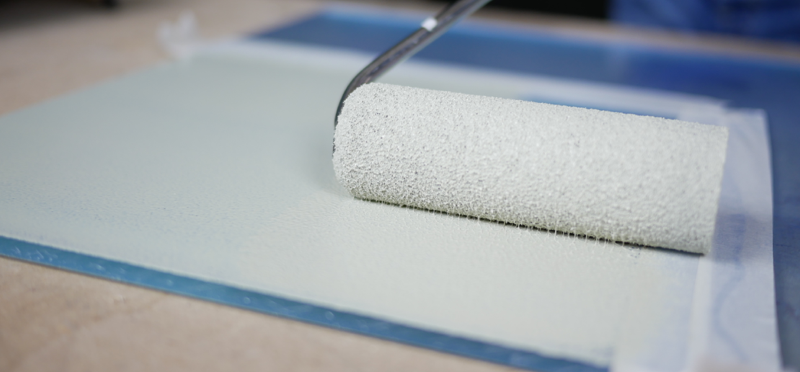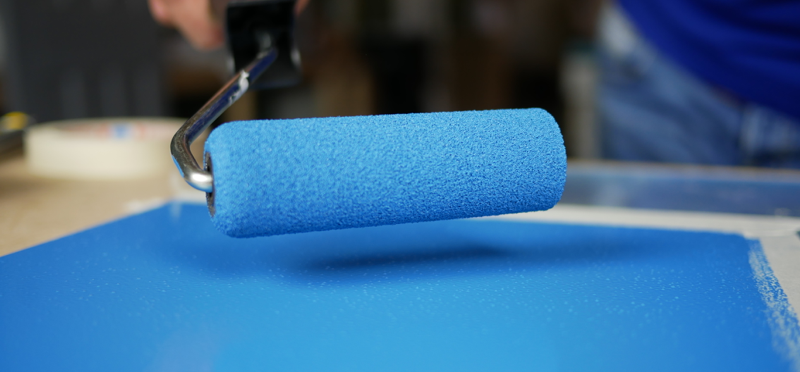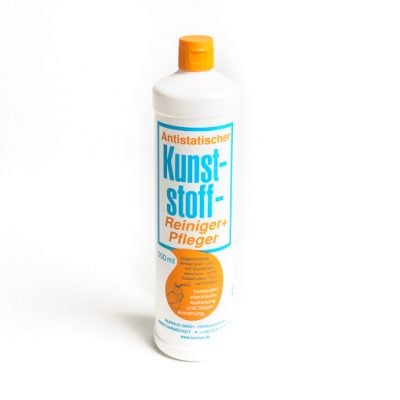Painting or staining PERSPEX® is not quite as straightforward as painting on wood, but you can paint acrylic glass with the right prepping. Painting on acrylic sheets is extremely popular among artists who use the plastic sheet as a ‘canvas’. There are endless possibilities: whether you want to create a PERSPEX® painting or paint a piece of plastic furniture, follow our six tips on how to spray paint plastic for a successful result.
# 1. Painting on cast or extruded acrylic
If you plan to paint on acrylic or use it as a canvas and also want to saw or drill the sheet, we advise not using extruded (XT) acrylic but opting for the cast version (GS) instead. Cast acrylic is more suitable for processing than the extruded type. The difference lies in the production process – with extruded acrylic, there is more tension on the sheet. The tension makes this type of acrylic more likely to break and, therefore, more difficult to process.
# 2. Prepare your acrylic correctly
The best way to prepare your acrylic will depend on what you want to make and how intensively you will be using the application. For example, making a painting on PERSPEX® requires a different approach than when you intend painting or spraying all over a set of plastic furniture.
Preparing PERSPEX® for making a PERSPEX® painting:
- Degrease the PERSPEX® canvas using lukewarm soapy water, an anti-static cleaner and a soft, lint-free cloth.
- Rinse the sheet well with lukewarm water.
- Check that the plastic sheet is free of dirt or you might scratch it when drying.
- Dry the PERSPEX® canvas with a soft tea towel.
Preparing PERSPEX® when you want to give an entire sheet a solid colour:
- Lightly roughen the surface to be painted by sanding with grit 220 or abrasive wool such as Scotchbrite.
- Degrease the PERSPEX® with lukewarm soapy water and an anti-static cleaner.
- Check that the plastic sheet is free of dirt or you might scratch it when drying.
- Dry the sheet surface with a soft dish towel.
- (Optional) if your plastic sheet isn’t too large, place in an oven at 40 ° Celsius for 10 minutes. This procedure will dry it thoroughly. The temperature also helps the primer and paint to adhere.
# 3. Avoid solvents if you are going to paint PERSPEX®
PERSPEX® is sensitive to solvents, and solvent-based paint will cause the sheet surface to soften and distort. The paint may subsequently react with the PERSPEX®, resulting in very disappointing results.
# 4. Use the right acrylic paint
If you want to paint acrylic in a solid colour, two options will each give you a good result: a water-based paint on latex base or acrylic lacquer. Be sure to use a good primer that is suitable for plastic. The primer ensures that the paint adheres to the surface and doesn’t flake or peel. Alternatively, use an acrylic lacquer, which you can see in the photos below. Always read the packaging carefully or ask the seller whether the paint is suitable for plastic surfaces. You can apply the paint with a brush or roller, with a roller giving a better finish. If you’re going to spray the paint, keep an eye on the recommended spraying distance and ambient temperatures. Spray in several (3-4) thin coats.
Are you going to make a painting on PERSPEX®? Acrylic or oil paints are the media most commonly used, and you don’t need to use a primer with them, as long as you have degreased your canvas thoroughly. Painting on smooth materials, such as PERSPEX®, is more complicated than painting on canvas. The paint moves more easily, which isn’t always what you want. Using soft brushes will make the paint less streaky.
# 5. Use good quality masking tape for masking
If you want to mask part of the sheet, choose a good quality painter’s tape. It’s worth spending a bit extra on this. Good painter’s tape provides a straight masking line and leaves no glue residue on the PERSPEX® sheet. Removing adhesive residue can be a time-consuming job, which you can easily avoid.
# 6. Let the paint dry and harden thoroughly
After spraying or painting, wait until the surface is bone dry. Have you masked an area of it? Remove the tape before the paint has cured because it will still yield along the edges. You get a nice straight line when removing the tape and you won’t pull the paint away with it. Then allow the paint to dry and harden properly. Always adhere to the drying time stated on the paint packaging.
If you used spray paint, we recommend that you finish with a polyurethane-based clear topcoat. This protects the paint layer and gives a better result.
Buy PERSPEX® for painting
Are you planning to paint on PERSPEX®? In our webshop, you’ll find clear cast PERSPEX® and coloured acrylic sheet in a range of thicknesses. Also good to know: we’ll saw your PERSPEX® canvas to the size you require for free. If you have questions about painting on plastic or about our products, please don’t hesitate to get in touch.









